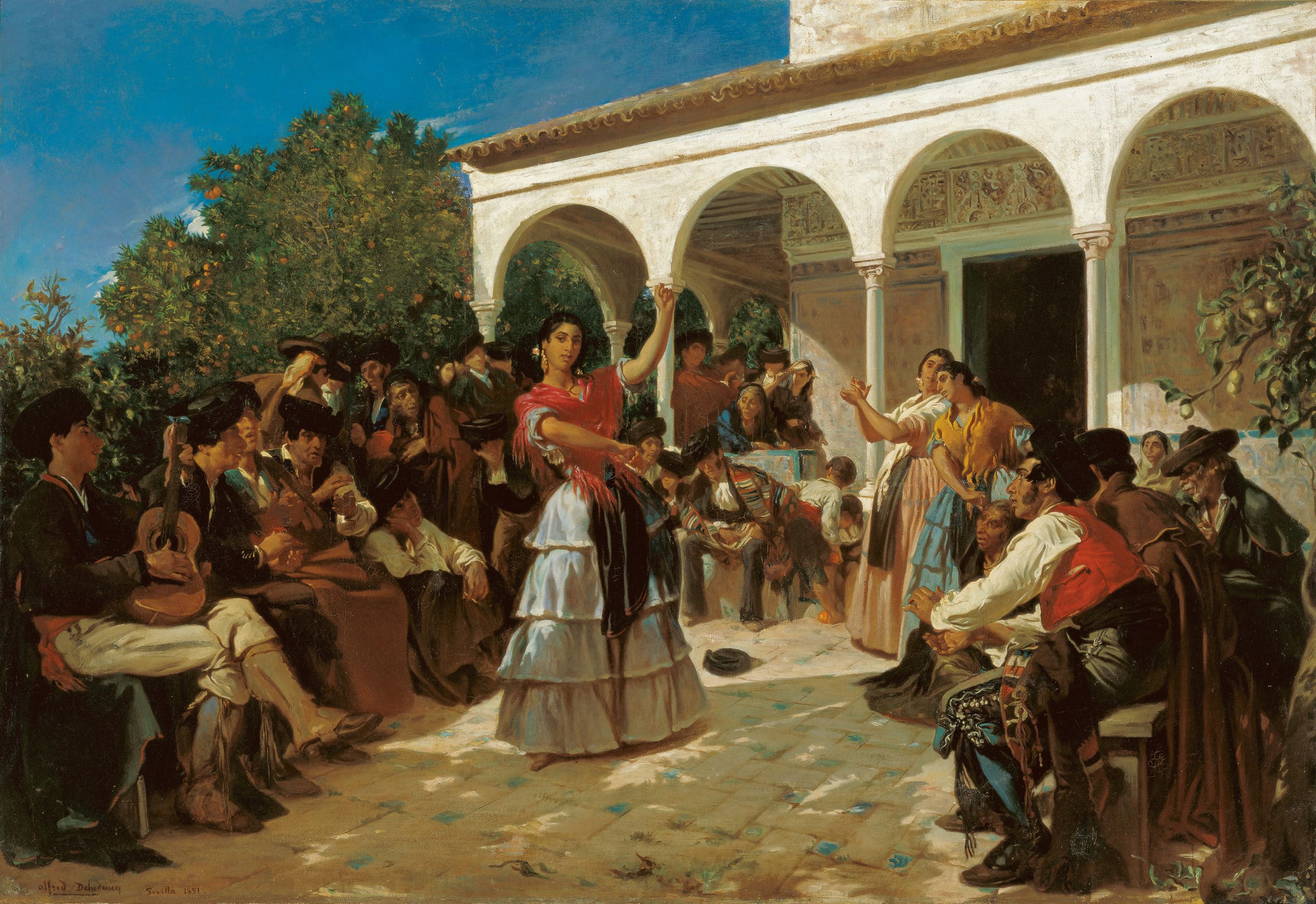Gypsies –  travellers, crystal ball witches and thieves – people to avoid. That’s the general stereotype that has been perpetuated across Europe. ‘Gypsy’ has become a prerogative term that denotes primarily treachery. It doesn’t seem to depict a category but rather a negative characteristic.
travellers, crystal ball witches and thieves – people to avoid. That’s the general stereotype that has been perpetuated across Europe. ‘Gypsy’ has become a prerogative term that denotes primarily treachery. It doesn’t seem to depict a category but rather a negative characteristic.
The incentive to write this short article came from one question that a friend asked me not long ago, which made me realise that most people don’t actually know that a ‘gypsy’ is more than an adjective:
‘You mean gypsies are a different ethnicity? I thought gypsy was a way of life.’
Despite the social stigma that has been attached to gypsies, being a gypsy is not a way of life nor a choice. It’s an ethnicity. While “gypsy” is the most known exonym amongst Ashkali, Sinti or Sindhi, most academics and gypsy communities prefer the term Roma or Romani when referring to their ethnicity, culture, or language. Yes you read right. Gypsies, or the Romani people have their own ethnicity, culture, language and even their own flag [although not universally accepted]. Sometimes the word ‘gypsy’ is attributed to Irish Travelers due to their nomadic nature but they are two distinct categories.
A brief history of the Roma
The Roma people, or the Romanies, are not, contrary to the common belief originally from Romania nor do they name has anything to do with the country, as it doesn’t have to do anything with Rome or the Romans either. However, one of the largest population of Romanies has settled in Romania, where the gypsy slave trade was first documented in 1385.
According to a genetic study finalized in 2012 the initial founding group of Romani likely departed from what is now the Punjab state in northwestern India close to the year 500 CE. From there, they travelled through Central Asia and the Middle East but appear to have mingled only moderately with local populations. The subsequent doorway to Europe seems to have been the Balkan area—specifically Bulgaria—from which the Romani began dispersing around 1,100 CE.
Since their arrival in Europe in the 12th century, Romanies have received mixed reactions around Europe, enduring discrimination, slavery and genocide along the centuries. They were expelled from certain parts of Germany in Italy, France, England, and Denmark. Switzerland, Denmark and England even had laws in place to put to death any Romanies [1510-1589] while Portugal began deportation of Romanies to its colonies in 1538.

It is estimated there are about 12 -14 million Romanies around the world although an exact figure is hard to obtain as many gypsies tend not to disclose their ethnicity due to fear of discrimination.
Gypsy Slavery and Genocide
Although Romani slavery was practiced in Wallachia [present day Romania] and Moldavia until abolition in 1856, the majority traveled as free nomads in their wagons, as alluded by the flag. Elsewhere in Europe, they were subject to ethnic cleansing, abduction of their children, and forced labor. As a result, large groups of the Romani moved to the Eastern part of Europe, towards Poland and Russia which was more tolerant. While Romanies started emigrating to North America since colonial times, after the 1860s it intensified.
During the Second World War, Nazis embarked on a systematical genocide of the Romanies, a process known as the Porajmos to the Romani people. Romanies were often killed on sight on the Eastern Front and the total number of deaths is estimated between 220 000 and 1 500 000, making it one of the largest mass killings in history. During communist Czechoslovakia, Romanies were labeled as ‘socially degraded stratum’ [nothing really changed nowadays] and sterilized the women, in an attempt to reduce the Romani birth-rate and population.
Nowadays, the Roma population, especially in Europe struggle to integrate into modern society, facing discrimination and harsh nationalist policies. In 2009 and 2010, France deported around 20 000 Romanian and Bulgarian Romanies and destroyed more than 50 Romani camps. Strong sentiments against the Romanies don’t only persist in Western Europe but also in Eastern Europe as many Romanies reject education and resort to crime due to social exclusion and stigma. Due to the acts of some, unfortunately, the whole segment is targeted. As a result anti-discrimination and integration startegies have been put in place by the EU.

Romani is recognized as a minority language in Colombia, Germany, Hungary , Kosovo, Sweden and Ukraine.
Romani Language
The Romani language is part of Indo-Aryan language with roots in Sanskrit and most Romanies speak one of its several dialects. Traditionally, it has been an oral language, with few records of it being written. Nowadays, if it is written at all, it is usually phonetically transcribed in the surrounding language. Some Romanies speak mixed languages based on the surrounding language, whilst retaining Romani-derived vocabulary.
The language has grammatical characteristics of Indian languages and shares with them a big part of the basic lexicon, for example, body parts or daily routines. More exactly, Romani shares the basic lexicon with Hindi and Punjabi. It shares many phonetic features with Marwari, while its grammar is closest to Bengali.
In the encyclopedia of languages, Matras (2006) views Romani as “kind of Indian hybrid: a central Indic dialect that had undergone partial convergence with northern Indic languages.”
Romani culture and beliefs
While Romanies have departed from their ancestors’ Hindu religion and adhere predominantly to Christianity and Islam, their social conduit is strictly governed by Hindu purity laws (‘marhime’ or ‘marime’). As such, lower body parts are considered impure and lower body clothes are washed separately. Childbirth is considered impure and it must occur outside the dwelling place and the mother, after giving birth, is also considered impure for up to 40 days. The Roma continue to practice Shaktism, a practice with origins in India, whereby a female consort is required for the worship of a god. Adherence to this practice means that for the Roma who worship a Christian God, prayer is conducted through the Virgin Mary, or her mother, Saint Anne. Shaktism continues over one thousand years after the people’s separation from India. 
Women tend to wear long, colorful dresses and cover their heads most of the time. Virginity is very important in unmarried women and Romanies tend to get married at young ages, often through arranged marriages between families. Typically, Gypsies love opulence. In day-to-day life, Roma women wear gold jewelry and headdresses decorated with coins as a display of prosperity and generosity towards others. In Romania, gold is considered sacred by most gypsies and it is not to be sold.
Romanipen is a complicated term of Romani philosophy that means totality of the Romani spirit, culture and law. It essentially defines being Romani. Sometimes a non-Romani may be considered to be a Romani if he is considered to have achieved Romanipen. Most usually this applies to adopted children. As a concept, Romanipen has been the subject of interest to numerous academic observers. It has been hypothesized that it owes more to a framework of culture rather than simply an adherence to historically received rules. (Saul, Tebbut, 2005)
Gypsy Music
Music plays a central part in Romanies lives in Central and Eastern Europe , and the style and performance practices of Romani musicians have influenced European classical composers such as Franz Liszt and Johannes Brahms.The distinctive sound of Romani music has also strongly influenced bolero, jazz, and flamenco (especially cante jondo) in Europe.
In Romania And Bulgaria, Romani traditional music is mostly played at weddings but nowadays it’s mostly associated with the modern Romani genre, manele, which fuses traditional Romani music with elements of Pop or sometimes Reggeaton music.
The Manele music has been often criticized for its poor quality lyrics emphasizing wealth, alcohol-abuse, machoness and an insatiable hunger to have and defeat one’s enemies. Indecent depiction of women in its music videos is also very common. The lyrical content as well as it’s video content is not far off from the Reggaeton genre in Latin America or commercial hip hop in the United States. Manele is mostly listened to by the lower class in rural areas but it is not uncommon in the urban either. The video I have provided here is a more traditional-oriented style of ‘manele’ and I have chosen to show it as it accurately depicts a relatively wealthy gypsy neighborhood in Romania but if you want to immerse yourself more into the world of “manele,” one simple Youtube search will satisfy your curiosity.
For these reasons both manele singers as well as listeners have been labeled as ‘manelisti’ or ‘cocalari’ and are considered of a lower strata, be it social, economic or intellectual. The social stigma attributed to the manelisti is similar to the stigma attributed to the bachateros (singers of Bachata music) in the 70’s and 80’s in the Dominican Republic.
A Gypsy’s story
It is estimated there are about 12 -14 million Romanies around the world although an exact figure is hard to obtain as many gypsies tend not to disclose their ethnicity due to fear of discrimination. Most Romanies find it hard to integrate into the societies they live in and end up resorting to crimes, which fuels a circle of discrimination, making it even harder for the ones that are trying to adapt. The Romani people have been in Europe for centuries and they have developed a culture of survival, which is unlikely to grow weaker. Maybe as their culture will come to be understood more, better integration policies will be put in place. Time will tell.
To end our gypsy lesson for today, I recommend listening to the Romanies hymn, astoundingly delivered by the Barcelona Gipsy Klezmer Orchestra.
Translation:
I went, I went on long roads
I met happy Gypsies
O Gypsies, where do you come from,
With tents happy on the road?
O Gypsies, O Gypsy people!
I once had a great family,
The Black Legion murdered them
Come with me,
Gypsies from all the world
For the Gypsies, roads have opened
Now is the time, rise up Gypsies now,
We will rise high if we act
O Gypsies, O Gypsy people!
Open, God, White doors
So I can see where are my people.
Come back to tour the roads
And walk with happy Gypsies
O Gypsies, O Gypsy people!
Up, Gypsy people!
Now is the time
Come with me,
Gipsyes from all the world
Dark face and dark eyes,
I want them like dark grapes
O Gypsies, O Gypsy people!






